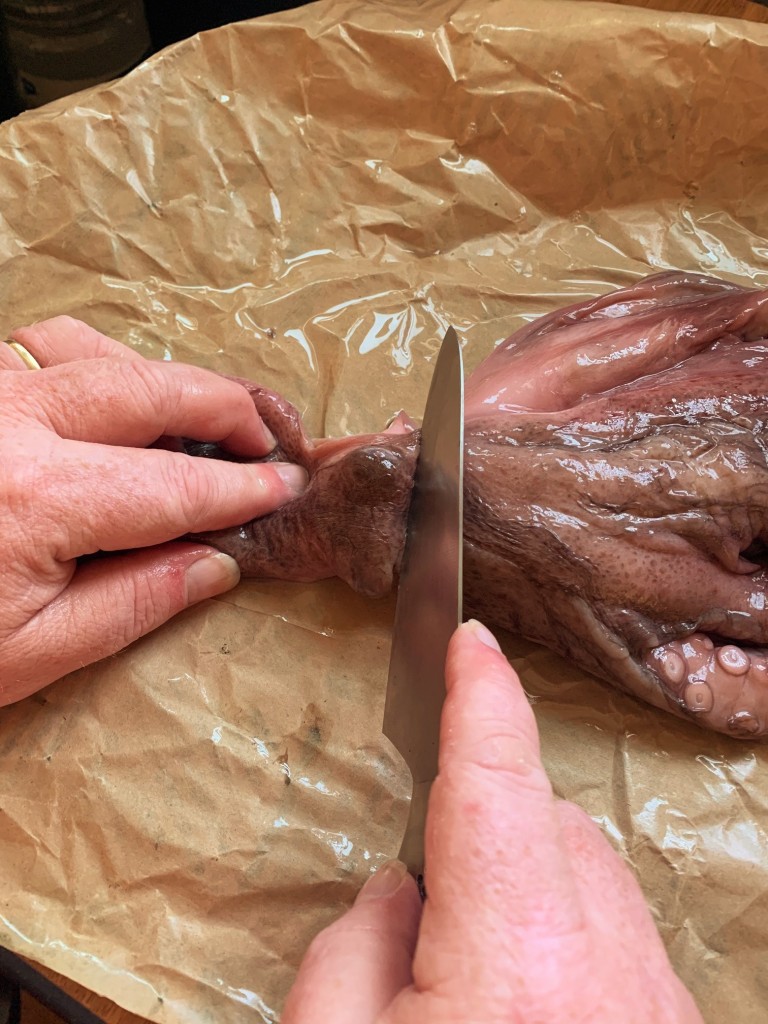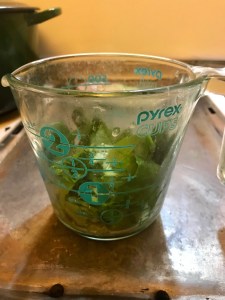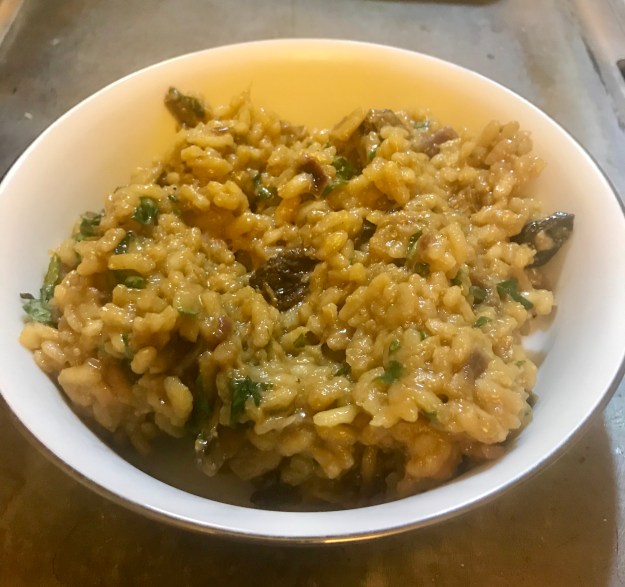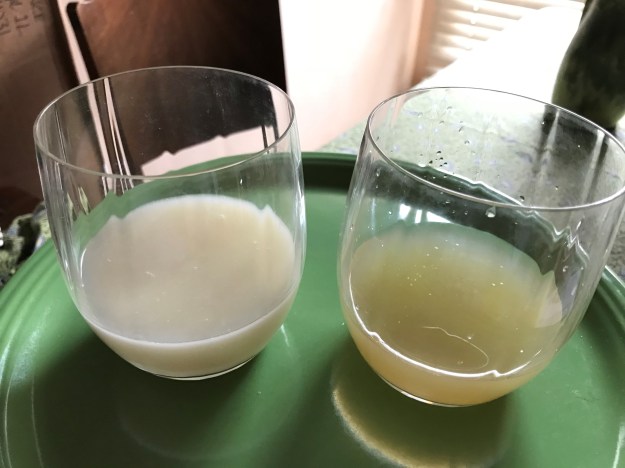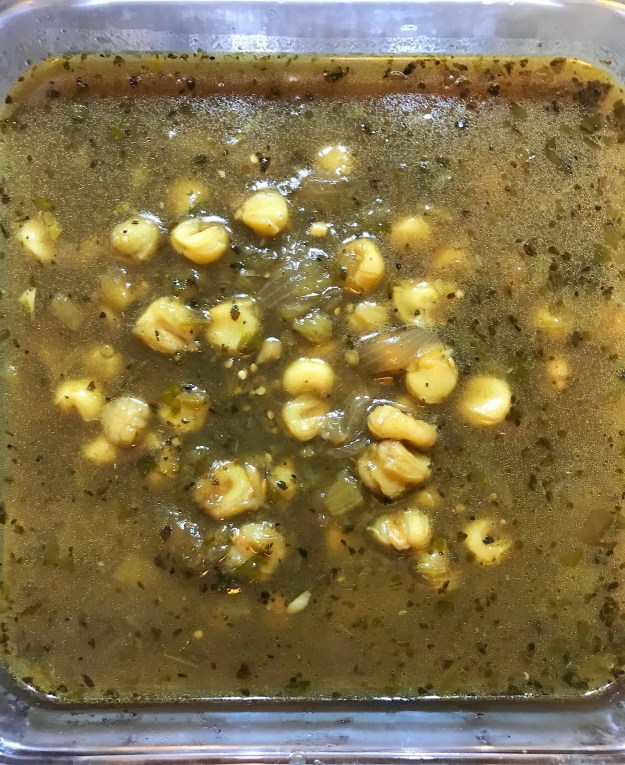
Believe it or not, the red colour comes mostly from the chorizo, not the tomatoes.
One inevitable responsibility after Thanksgiving dinner is the disposal of the turkey carcass. Picked clean for sandwiches and goodness knows what all else — tamales? sliders? pot pie? — there’s still a significant heap of bones and attached bits that deserve a better resting place than the rubbish bin.
Around our house, we generally made turkey and vegetable soup, but it just seemed too… turkey-ish. By the time we’d gotten down to the carcass, believe me, most of the members of our household were all done with turkey. This year, I decided to make some simple turkey stock (something on the order of four liters, as it turned out, because I wasn’t patient enough to let it condense into what Julia Child called a “semi-demi-glace”). But not for turkey soup. No. I figured it would make an excellent base for one of my favourite Mexican dishes, sopa de albóndigas (meatball soup).
While this soup is decidedly Mexican, its roots go back to the times that Arabs ruled Spain. The word “albóndigas” is derived from the Arabic word for hazelnut, “al-bunduq,” because the meatballs of the era were about the size and shape of said nuts. Their preparation was described in one of the great cookbooks of its day (its day being the 13th century), Kitab al- tabikh fi Maghrib wa al-Andalus (An Anonymous Andalusian Cookbook). Not too surprisingly, the meatballs emigrated to the New World with the conquistadores (along with smallpox and syphilis, albeit with a happier outcome for the locals). The use of mint in this recipe is almost certainly a descendant from a Middle Eastern predecessor, given the region’s historic proclivity for employing the herb as a seasoning for meats.
Far as I’ve been able to discover, there are two general schools of thought on sopa de albóndigas. One holds that it’s primarily a tomato-based soup, and the broth ought to be more or less jam-packed with tomato-y goodness and coloured fire engine red (PMS 199); the other is that tomatoes play a role, but not the lead. I opted for the latter. After all, I’d gone to some trouble to make the turkey stock, and I didn’t want it completely buried in the mix. The soup ultimately turned out a rich red colour, but that was thanks to the chorizo, not the tomatoes (as you can see in the picture below, when it was just the veggies and stock).
ALBÓNDIGAS SOUP

Carrots, planed on the mini-mandoline. I then cut the “coins” in half.
12 cups/3 liters turkey stock (or chicken, or vegetable, or beef)
2 carrots, sliced
1 large onion, chopped
4 stalks celery, diced
1 (14 ounce/411 g) can diced tomatoes (these were fire roasted)
1 (7 ounce/198 g) can diced green chiles, drained
1 cup/150 g cooked rice
2 teaspoons/2 g dried oregano
2 teaspoons/2 g ground cumin
1 clove garlic, minced
1 to 3 tablespoons/15-45 ml sauce from a can of Chipotle chiles in adobo sauce, to taste
1 seeded Chipotle chile in adobo sauce, optional
Sea salt and pepper to taste (smoked salt works well in this)
Here’s a trick for the rice; just cook 1 cup/180 g of dried rice (I used Brown Jasmine), put 2/3 of it in the soup and reserve 1/3 for the meatballs.
[A NOTE ABOUT CHILES: If you’re seeding Chipotle chiles in adobo sauce, wear gloves. Even the sauce is pretty hot, and if you touch your face… well, you won’t do it a second time. For the uninitiated, add the adobo sauce a tablespoon at a time, stir the broth, taste, and decide if you want to add more. If you dump it all in at once, good on you, you brave soul, but remember that this is a bell that can’t be unrung. Also, if you don’t have Chipotles in adobo sauce handy, you can get Chipotle pepper powder; use 1-3 teaspoons/1-3 g, tasting as you go.]

Broth and veggies. Mmmm.
Making the broth is super easy; basically, you just dump it all into a big pot, bring it to a boil, and then back it off to a simmer. I let mine simmer for a couple of hours, because I started making it one evening after dinner. [In fact, I put the broth in the refrigerator overnight and finished the soup the following day.] If, however, you are doing a same-day soup, allow it to simmer for about an hour, so you can soften up the celery and onions and carrots, and give the flavours a chance to blend.
Meatballs (makes about 50 small meatballs)
1 lb/.5 kg lean ground beef
1 lb/.5 kg chorizo sausage, casing removed (not the fully cooked kind)
2 eggs, beaten
1/2 cup/70 g cooked rice
2 garlic cloves, minced
5-10 mint leaves, chopped
1/2 cup/25 g cilantro leaf, chopped
1/2 teaspoon/3 g salt
1/4 teaspoon/.5 g freshly ground black pepper
Full disclosure: I had about 100 g of turkey bits that I ran through a food processor and added to the meatballs. It’s not part of the “official” recipe, but it did taste good.

Mint and garlic get all muddled up.
Some people say to make the meatballs first, but there’s really no need; getting the broth together and letting it simmer will afford you more than enough time to make them. The only trick to assembling the meatballs is that you should mash the garlic and the chopped mint into a sort of paste; otherwise, it’s just a matter of mixing it all up and rolling little meatballs (albóndigas) to about 1″/2.5 cm each. Heat up the broth to a low boil and lower the albóndigas — gently — into the broth. Let the meatballs cook at that temp for 5 minutes, then back the heat off, and simmer a further 20 minutes. Remember, at this point, your chief aim is to cook the meatballs through. That’s why smaller is better.

Tiny little soldiers of meat, preparing to parachute into — quite literally — the soup.
You can serve it straight, or if you want to get extra fancy, you can make corn tortilla ribbons for garnish. Just quarter small corn tortillas, stack the quarters, then slice the edges into ribbons. Heat 2 tablespoons of oil in a frying pan, dump the ribbons inthe pan and stir until slightly browned. Remove them to a paper towel to drain and crisp up. Sprinkle over soup.

With the fried corn tortilla strips; these were spinach corn tortillas, for colour primarily.



